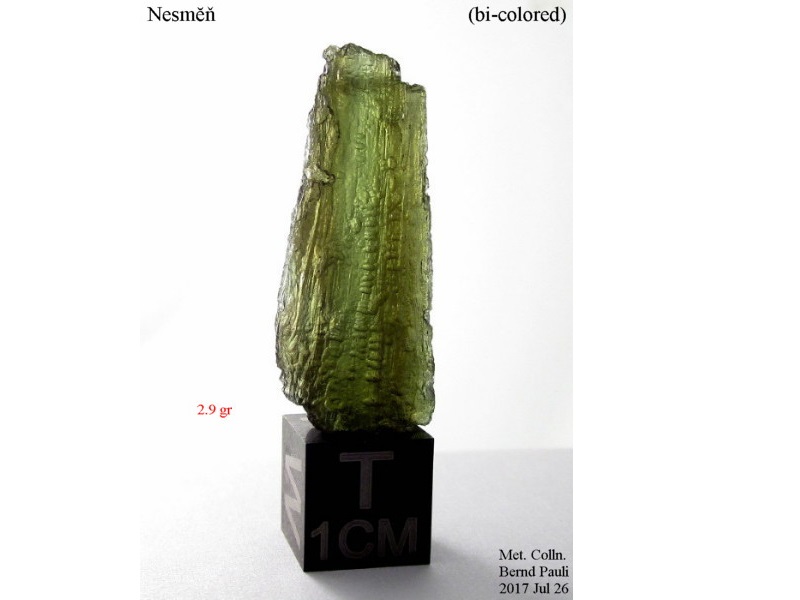|
Roll Overs:
#1
#2
|

|
|
Copyright (c) Bernd Pauli.
|
2.9 grams. Impactite
Bernd writes:
Moldavites are silica-rich natural glasses that were produced when a
cosmic impactor excavated the Ries Basin (Noerdlinger Ries) in Germany
about 14.4–15.1 Ma ago. The Ries Crater has a diameter of 24 km and the impacting object must have measured hundreds of metres in diameter. While Australasian tektites are black, moldavites are green and highly translucent probably due to their relatively low content of titanium.
The MPOD moldavite shown here is a rare example of a bi-colored moldavite.
Whereas Trnka, Houzar (2002), and Dehner (2009) are of the opinion that such moldavites are the result of collision of molten moldavites during flight, Michael Hurtig in his recently published book on Lusatian moldavites (2017) envisions a different scenario. On page 160 he writes that bi-colored moldavites are the result of primarily inhomogenous glass melts and that the sediments from which they formed must have consisted of several different components that were not completely molten and thus not homogenized. Such a process would provide an easy explanation for the color changes and would also be in accordance with the gradual, diffuse change of color that can be observed in my bi-colored specimen. The central part of this rod-shaped moldavite is green whereas the rim areas are brownish olive.
Click to view larger photos #1 #2
|
| |
Twink Monrad
9/30/2021 10:58:30 AM |
they are all so beautiful |
John Divelbiss
9/30/2021 6:22:50 AM |
nice Bernd...as for coloring I have a dark, almost black looking moldavite specimen in the right lighting. Some of the darkness is from it being more roundish (thick) blocking the light more. But it is a dark green. |
| |
|